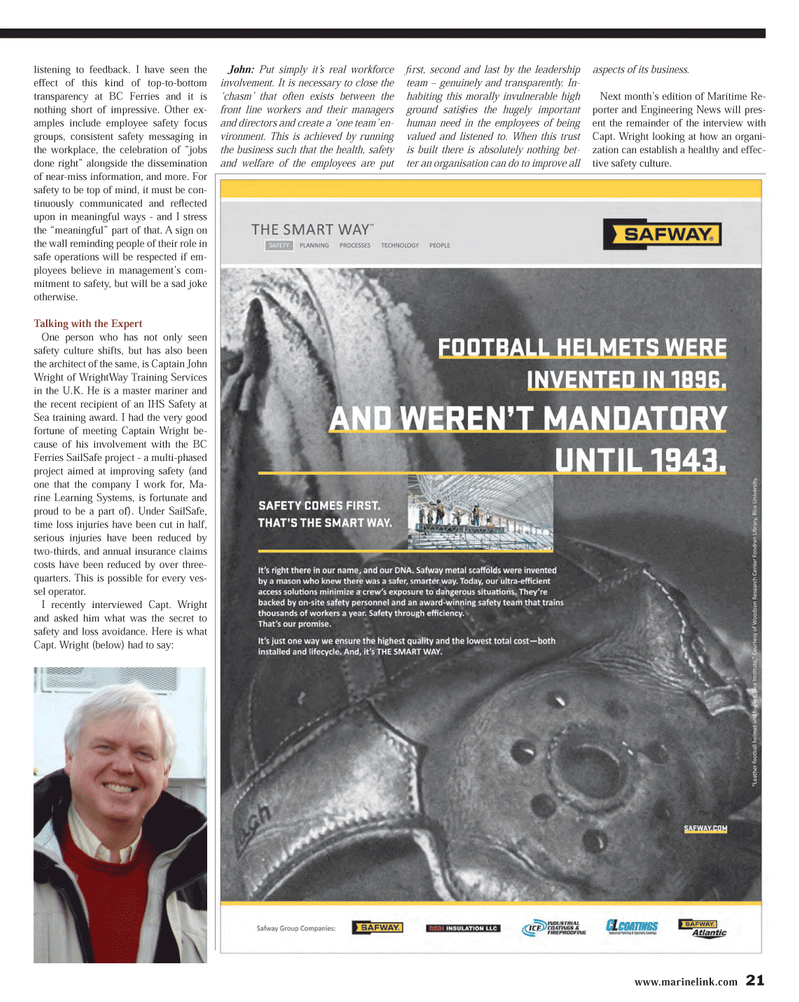
Page 21: of Maritime Reporter Magazine (October 2013)
Marine Design & Construction
Read this page in Pdf, Flash or Html5 edition of October 2013 Maritime Reporter Magazine
www.marinelink.com 21listening to feedback. I have seen the effect of this kind of top-to-bottom transparency at BC Ferries and it is nothing short of impressive. Other ex-amples include employee safety focus groups, consistent safety messaging in the workplace, the celebration of ?jobs done right? alongside the dissemination of near-miss information, and more. For safety to be top of mind, it must be con-tinuously communicated and reß ected upon in meaningful ways - and I stress the ?meaningful? part of that. A sign on the wall reminding people of their role in safe operations will be respected if em-ployees believe in management?s com- mitment to safety, but will be a sad joke otherwise. Talking with the Expert One person who has not only seen safety culture shifts, but has also been the architect of the same, is Captain John Wright of WrightWay Training Services in the U.K. He is a master mariner and the recent recipient of an IHS Safety at Sea training award. I had the very good fortune of meeting Captain Wright be- cause of his involvement with the BC Ferries SailSafe project - a multi-phased project aimed at improving safety (and one that the company I work for, Ma- rine Learning Systems, is fortunate and proud to be a part of). Under SailSafe, time loss injuries have been cut in half, serious injuries have been reduced by two-thirds, and annual insurance claims costs have been reduced by over three-quarters. This is possible for every ves- sel operator. I recently interviewed Capt. Wright and asked him what was the secret to safety and loss avoidance. Here is what Capt. Wright (below) had to say: John: Put simply it?s real workforce involvement. It is necessary to close the ?chasm? that often exists between the front line workers and their managers and directors and create a ?one team? en- vironment. This is achieved by running the business such that the health, safety and welfare of the employees are put Þ rst, second and last by the leadership team ? genuinely and transparently. In- habiting this morally invulnerable high ground satis Þ es the hugely important human need in the employees of being valued and listened to. When this trust is built there is absolutely nothing bet- ter an organisation can do to improve all aspects of its business. Next month?s edition of Maritime Re- porter and Engineering News will pres-ent the remainder of the interview with Capt. Wright looking at how an organi- zation can establish a healthy and effec- tive safety culture. MR #10 (18-25).indd 21MR #10 (18-25).indd 2110/2/2013 3:48:15 PM10/2/2013 3:48:15 PM

 20
20

 22
22
